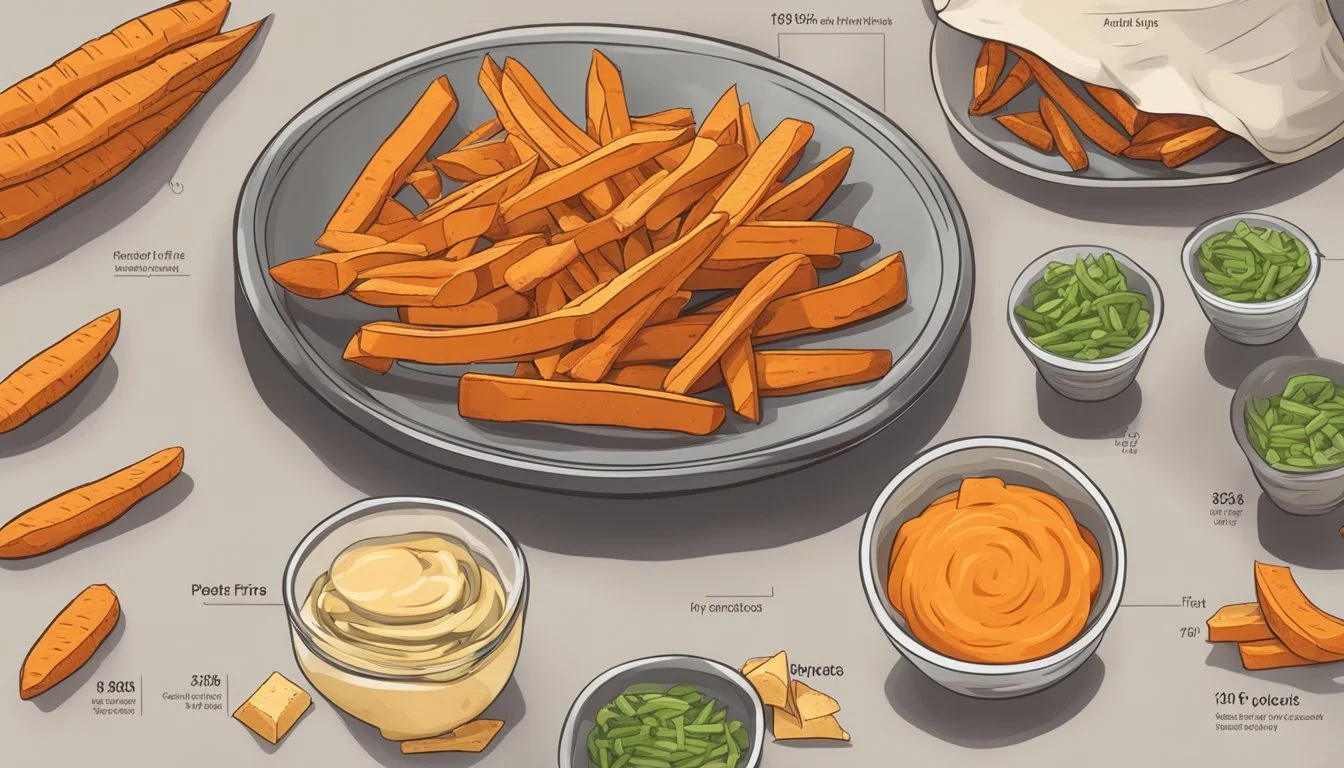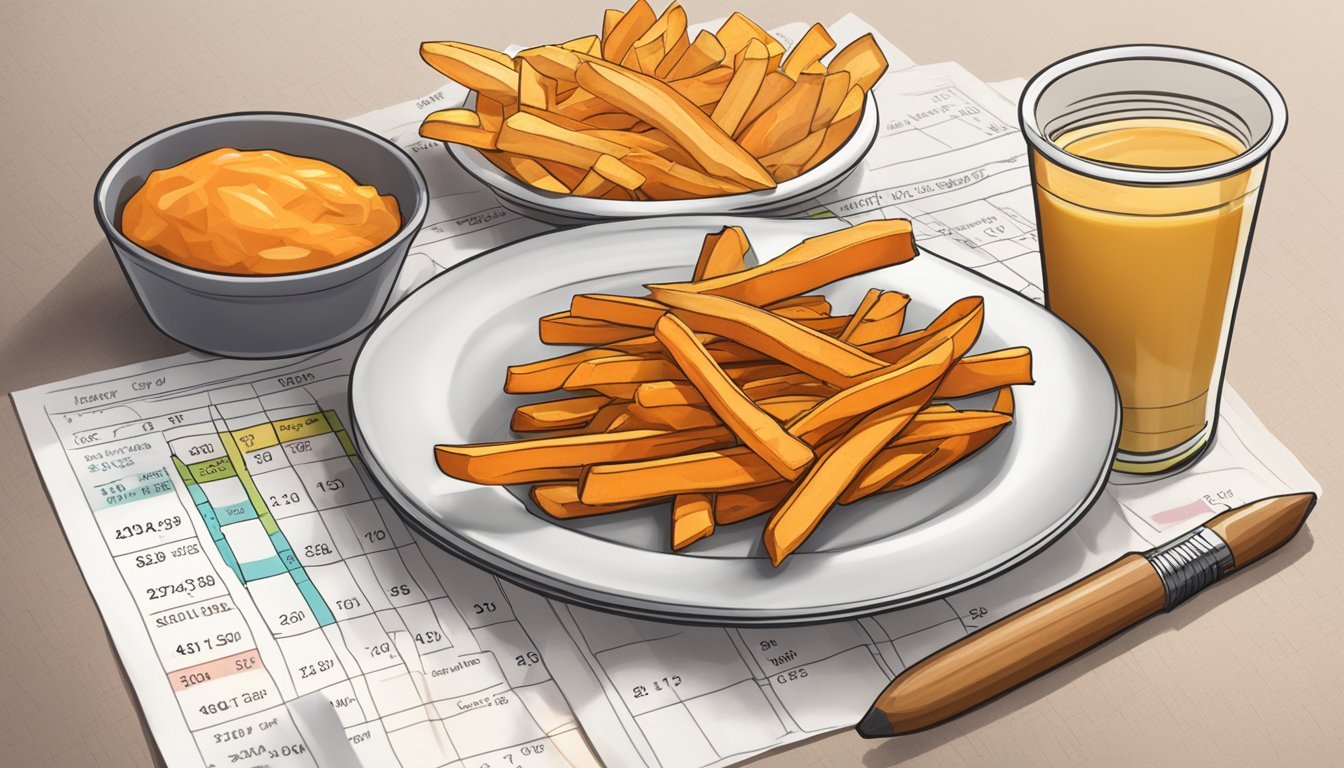Are Sweet Potato Fries a Healthier Alternative to Regular Fries
Analyzing Nutritional Benefits
Sweet potato fries have garnered a reputation as a healthier alternative to traditional fries made from white potatoes. (What wine goes well with potatoes?) This belief largely stems from the nutritional profile of sweet potatoes (What wine goes well with sweet potatoes?), which are high in vitamins and fiber. When prepared as fries, these orange-hued tubers often boast an increased content of vitamins such as vitamin A, and they provide dietary fiber that aids digestive health. However, the cooking method plays a crucial role in determining the healthiness of fries, regardless of the potato type used.
The cooking method can significantly impact the nutritional value of both sweet potato fries and regular fries. Air frying is one option that is considered healthier than deep frying, as it reduces the amount of oil absorbed during cooking. Sweet potatoes, when air-fried or baked, can retain more of their nutritional benefits compared to deep frying. It is important for consumers to consider not just the type of potato, but also the preparation method when assessing health benefits.
Nutritionists tend to agree that moderation is key when consuming foods traditionally considered to be indulgent, like fries. While sweet potato fries may offer certain nutritional advantages, such as being a source of beta-carotene, both types of fries can be part of a balanced diet if consumed in moderate quantities. Pairing fries with healthier condiments or using spices instead of salt can further enhance their place within a mindful eating plan. It is the overall dietary pattern, rather than focusing on a single food, that most influences health.
Nutritional Profile of Sweet Potato Fries vs Regular Fries
When comparing the nutritional profiles of sweet potato fries and regular fries, one finds distinct differences in calorie content, fat, fiber and protein levels, as well as vitamin and mineral content.
Caloric Comparison
A 3-ounce serving of baked sweet potato fries contains approximately 150 calories, whereas the same serving of baked regular fries has about 125 calories. It should be noted that these values can vary depending on the preparation method.
Fat Content Analysis
Sweet potato fries generally contain less saturated fat than regular fries. The exact difference can depend on how they are cooked, but it’s the type of fat used in frying that largely determines the fat profile. Regular fries often contain more saturated fat due to the oils used in frying.
Fiber and Protein Levels
Both sweet potato fries and regular fries offer similar amounts of protein, which is minimal. However, sweet potato fries typically have higher fiber content, which can contribute to better digestion and provide a longer-lasting feeling of fullness.
Vitamin and Mineral Content
Sweet potatoes are a potent source of Vitamin A, with one serving providing a significant portion of the daily requirement, which far exceeds that found in white potatoes. Sweet potato fries also contribute more potassium, an essential mineral for electrolyte balance and muscle function. Regular fries may be higher in certain B vitamins and other minerals, but sweet potato fries have a more favorable vitamin and mineral profile overall especially for nutrients like Vitamin C and beta-carotene.
Health Implications
The comparison of sweet potato fries and regular fries reveals distinct differences in their nutritional profiles, with implications for weight management, blood sugar control, heart health, and antioxidant properties.
Weight Management
Sweet potato fries typically contain slightly more calories than regular fries, with a portion carrying 150 calories compared to 125 calories for the same serving of French fries. However, they offer more dietary fiber, which can enhance satiety and contribute to weight management. While both types of fries are high in fat if deep-fried, opting for baked versions can reduce fat content and thus be a healthier option in managing calorie intake. It's important to note the portion size, as larger servings can lead to increased calorie consumption and potentially contribute to obesity.
Blood Sugar Control
Regular fries, made from white potatoes, tend to have a higher glycemic index and can cause faster spikes in blood sugar levels. Sweet potatoes have a relatively lower glycemic index, which may help in more gradual blood sugar management. However, this may vary depending on preparation methods, as deep-frying can still prompt rapid glucose absorption.
Heart Health
Both sweet potato fries and regular fries contain fat, but the key lies in the type of fat used in cooking. Deep-fried options can contain unhealthy trans fats and saturated fat, contributing to poor heart health. Conversely, baking with minimal heart-healthy oils can limit the intake of these fats. Moreover, sweet potatoes inherently contain less sodium than processed fries, which is better for maintaining a healthy blood pressure, a crucial factor for heart health.
Antioxidant Properties
Sweet potato fries provide substantial health benefits in the form of antioxidants. They are rich in beta-carotene, a precursor to vitamin A, important for vision and immune function. Sweet potatoes are also a source of other antioxidant compounds that combat free radicals, potentially lowering the risk of certain diseases. The choice of cooking methods plays a role, as baking preserves more antioxidants compared to deep-frying, which can generate carcinogens.
In considering sweet potato fries as a healthier alternative, it's essential to assess the method of cooking and serving size, as these factors significantly impact the health implications of consuming either side dish.
Cooking Techniques for Healthier Fries
Choosing the right cooking technique can significantly impact the nutritional profile of sweet potato fries. Understanding the methods that reduce oil usage and promote a crisp texture is essential for making fries that are both delicious and healthier.
Deep Frying vs Air Frying
Deep frying sweet potato fries immerses them in hot oil, producing a crispy texture. However, this method can also lead to a higher fat content. Air frying, on the other hand, uses circulating hot air to achieve a similar crispy outcome with minimal oil. Sweet potato fries prepared in an air fryer not only tend to have a lower fat content but also boast a texture that is comparably satisfying to deep-fried alternatives.
Baking Sweet Potato Fries
Baking is a popular alternative to frying, yielding healthy sweet potato fries with less oil. To bake sweet potato fries, preheat the oven to 400 degrees Fahrenheit. Cut the sweet potatoes into even strips, aiming for consistent size for even cooking. Toss the slices on baking sheets with a light coating of oil and seasonings. Sweet potatoes should be spread out in a single layer to ensure they become crispy rather than soft or soggy. The skin can be left on for additional fiber and texture.
Oil Choices and Health Benefits
The type of oil used can influence both the flavor and healthfulness of sweet potato fries. Olive oil is a heart-healthy option that contains monounsaturated fats, beneficial for cholesterol levels. It is suitable for both baking and air frying and can enhance the taste of the fries. When roasting or baking, olive oil helps create a crispy exterior while keeping the inside tender. For those seeking a gluten-free option, ensuring that the sweet potato fries are not contaminated with flour or other gluten-containing products during preparation is important. Homemade sweet potato fries can easily meet gluten-free dietary requirements when the appropriate oil and seasonings are chosen.
Flavor and Versatility
Sweet potato fries offer a unique taste profile and adaptability, making them a versatile choice for both cooking at home and dining out. They provide a sweet and savory flavor that can be enhanced with various seasonings and paired with a wide range of sauces and dishes.
Seasoning Sweet Potato Fries
When preparing sweet potato fries, their natural sweetness can be complemented with a simple dash of salt and pepper or elevated with more complex spice blends. A popular choice for seasoning includes a mix of garlic powder, paprika, and black pepper. This combination not only enhances the flavor but also adds a visually appealing golden hue to the fries once baked or fried. For those seeking an extra kick, a pinch of cayenne pepper can add a spicy dimension.
Serving Suggestions and Pairings
Sweet potato fries can be a flavorful snack on their own or serve as a side dish to a variety of meals. They pair exceptionally well with proteins such as burgers, grilled chicken, or fish. Dipping sauces can significantly elevate the eating experience; options range from traditional ketchup to more gourmet choices like aioli or a creamy yogurt-based dip. When selecting a dipping sauce, one might consider the balance of flavors—the sweetness of the fries complements both tangy and savory sauces, making them a versatile option for many palates. For a healthier approach, opting for dips low in added sugars and high in protein can maintain the health benefits of the healthy sweet potato fries.
Practical Tips for Incorporating Sweet Potato Fries
Incorporating sweet potato fries into your diet can offer nutritional advantages and a sweet flavor twist to the traditional side of fries. Sweet potatoes are a source of Vitamin A and potassium, bringing health benefits when consumed in moderation.
Portion Sizes and Moderation
To maintain balance and reap the nutritional benefits of sweet potato fries without contributing to weight gain, one should pay careful attention to portion sizes. A standard portion of sweet potato fries is roughly 3 ounces (85 grams), which is about 15-20 fries, depending on their cut. It's important to remember that sweet potato fries, while healthier, still contain calories, and they should replace regular fries rather than being added as an extra side.
Choosing and Storing Sweet Potatoes
The key to delicious and nutritious sweet potato fries starts with the selection of the sweet potatoes themselves. Look for firm sweet potatoes with smooth skin, free of bruises or soft spots. To store, keep them in a cool, dark, and well-ventilated place to prolong freshness; avoid refrigeration as it can alter their taste and texture. Properly stored, sweet potatoes can last up to a couple of weeks.
Making Sweet Potato Fries at Home
Opting to make sweet potato fries at home allows for control over cooking methods and ingredients, reducing unnecessary fats and sodium. Here are some tips:
Preparation: Start by washing and peeling the sweet potatoes. Slice them into ¼ to ½ inch wide strips for even cooking.
Seasoning: Coat the fries lightly with olive oil for crispness. Season with a pinch of salt, pepper, and spices like cinnamon or paprika, depending on your taste preference.
Baking: Preheat the oven to 400-425°F. Arrange the fries in a single layer on a baking sheet lined with parchment paper. Bake until they are crispy and golden brown, turning once halfway through cooking, which usually takes about 30 minutes.
By choosing to bake the fries, one can avoid unhealthy fats associated with deep-frying. When enjoying homemade sweet potato fries, also consider healthy condiments or minimal flavor additions to preserve the nutritional value.





